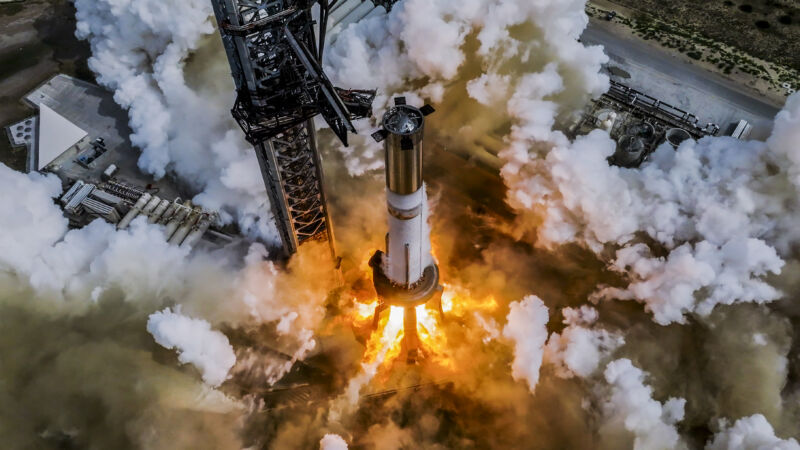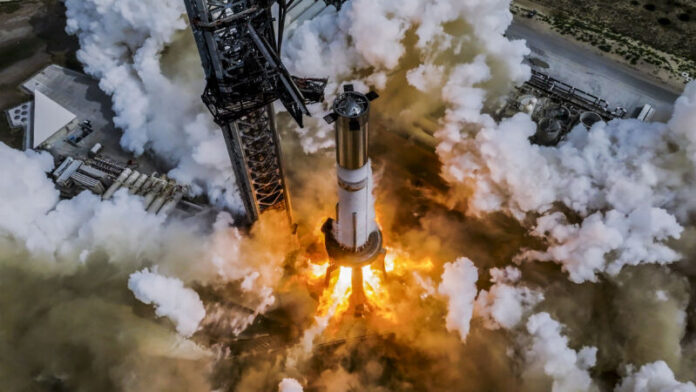
Enlarge / The Super Heavy booster for Flight 5 of Starship undergoes a static fire test earlier this month. (credit: SpaceX)
After SpaceX decided to launch orbital missions of its Starship rocket from Texas about five years ago, the company had to undergo a federal environmental review of the site to ensure it was safe to do so.
As a part of this multi-year process, the Federal Aviation Administration completed a Final Programmatic Environmental Assessment in June 2022. Following that review, SpaceX received approval to conduct up to five Starship launches from South Texas annually.
SpaceX has since launched Starship four times from its launch site in South Texas, known as Starbase, and is planning a fifth launch within the next two months. However, as it continues to test Starship and make plans for regular flights, SpaceX will need a higher flight rate. This is especially true as the company is unlikely to activate additional launch pads for Starship in Florida until at least 2026.
Read 11 remaining paragraphs | Comments
Ars Technica - All contentContinue reading/original-link]




